Sample Rent Increase Letter Template for Landlords
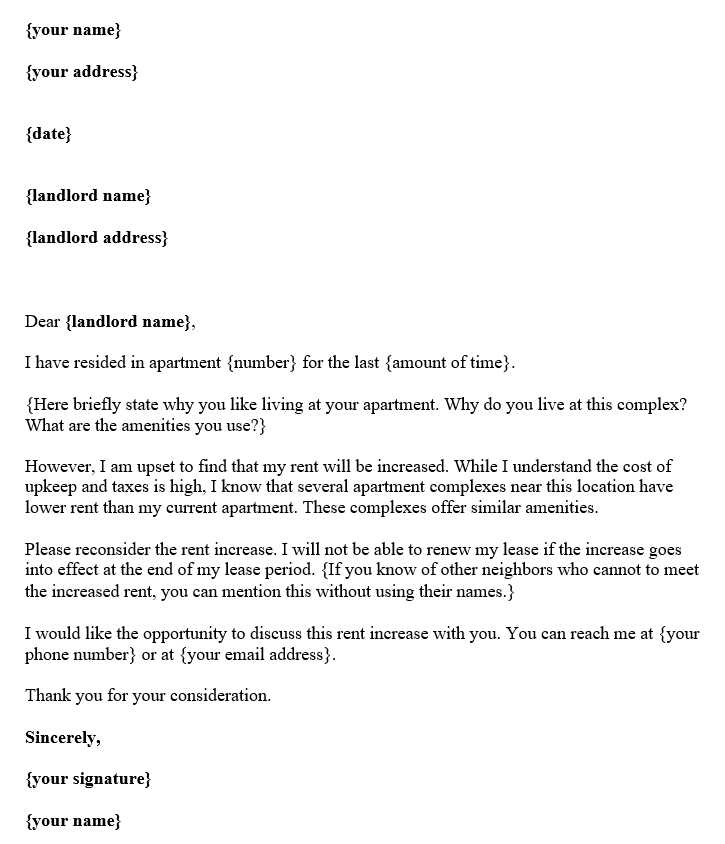
Communicating changes in rental agreements is a crucial aspect of maintaining a smooth relationship between landlords and tenants. A well-crafted notification ensures transparency and provides tenants with clear information about new conditions regarding their payments. Clear communication helps avoid misunderstandings and establishes a professional tone.
When it comes to adjusting the amount a tenant pays, it is essential to follow a structured approach. This document should outline the necessary details, such as the amount of the adjustment, the effective date, and any legal considerations. Properly formatted messages also contribute to fostering trust and respect between both parties involved.
Whether you are sending such a communication for the first time or are familiar with the process, having a clear, concise framework can save time and reduce errors. Ensuring that each part of the message is easy to understand will lead to a more cooperative experience for both sides.
Why Send a Rent Increase Notice
Notifying tenants about changes in the financial terms of their tenancy is essential for maintaining a transparent and respectful relationship. By sending a formal notice, landlords can ensure that tenants are aware of the adjustments and the reasons behind them, preventing confusion and potential disputes.
Proper communication also helps tenants plan for upcoming changes in their budget and gives them adequate time to adjust. Providing a written notification ensures that there is a clear record of the communication, which can be important for both parties in the event of misunderstandings or disagreements.
Additionally, sending a formal notice demonstrates professionalism and compliance with legal requirements. Many regions have specific laws governing how and when such adjustments must be communicated, and failing to follow these regulations can lead to legal complications for landlords.
Understanding the Need for Notification
When adjustments are made to the terms of an agreement, it is essential to formally inform all involved parties. This practice ensures that everyone is aware of the changes, allowing for proper preparation and preventing unnecessary confusion. Without clear notification, misunderstandings can arise, potentially leading to dissatisfaction or legal complications.
Additionally, a formal notice provides a documented record of the change, which can be important in case of disputes. This written communication serves as proof that the modification was properly communicated and agreed upon. For landlords, it also reflects a level of professionalism and adherence to the principles of fair business practice.
In many jurisdictions, providing such notifications is not just good practice but a legal requirement. Failure to properly inform tenants can result in fines or other penalties, so understanding the importance of this step is crucial for maintaining compliance with local laws.
Structuring Your Rent Adjustment Letter
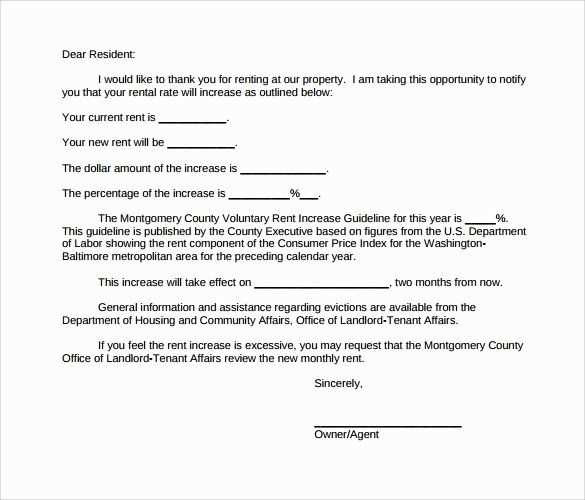
Creating a well-organized document to inform tenants about changes in their agreement is key to ensuring clarity and professionalism. The structure should be clear and concise, highlighting all important details and maintaining a respectful tone. A good framework ensures that no crucial information is overlooked and that the message is easily understood by the recipient.
Key Elements to Include
When drafting the document, certain components must be incorporated to ensure both completeness and professionalism. Below is an example of how the structure could be organized:
| Section | Description |
|---|---|
| Introduction | Begin with a polite greeting and a brief explanation of the purpose of the document. |
| Details of the Change | Clearly state the change in terms, including the new amount and effective date. |
| Legal Reference | If applicable, reference any relevant laws or guidelines that justify the change. |
| Closing | End with a professional closing statement, offering contact information for any further questions. |
Maintaining a Professional Tone
The tone of the communication is as important as its content. A respectful, professional tone helps to avoid conflict and ensures that tenants understand the reasons behind the changes. Avoid being overly harsh or abrupt, and instead focus on fostering an atmosphere of mutual respect and understanding.
Components to Include in Your Template
When creating a formal notification regarding adjustments to a tenancy agreement, it is essential to ensure that all relevant information is included. A well-structured document helps avoid confusion and provides clarity on the new terms. Key components should be carefully considered to ensure the message is both clear and legally compliant.
First, you should include an introduction that clearly identifies the purpose of the communication. It’s important to set the tone appropriately, explaining the reason for the adjustment. The next section should specify the exact change being made, including details like the new amount and when it will take effect.
Another important part is including any legal references or guidelines that support the change. This helps reinforce the validity of the decision and gives tenants a clear understanding of the reasoning behind it. Finally, a polite closing should encourage open communication, offering contact details for any questions or concerns.
Rent Increase Notice Timing
Timing is crucial when notifying tenants about adjustments to their tenancy terms. Providing adequate notice ensures that tenants have enough time to prepare for the change and adjust their financial plans accordingly. Sending the notification too late can lead to confusion or even legal issues, as many regions have specific rules on how much notice must be given before such changes take effect.
It is important to familiarize yourself with local regulations regarding notification periods. In most cases, tenants should receive notice well in advance, typically 30 days or more, depending on the jurisdiction. This allows them to make necessary arrangements or address any concerns they may have before the change takes effect.
Additionally, sending the notice early gives tenants the opportunity to seek clarification or negotiate the new terms, if necessary. Clear communication during this period helps maintain a positive and professional relationship between landlords and tenants, fostering mutual respect and understanding.
When to Deliver the Notification
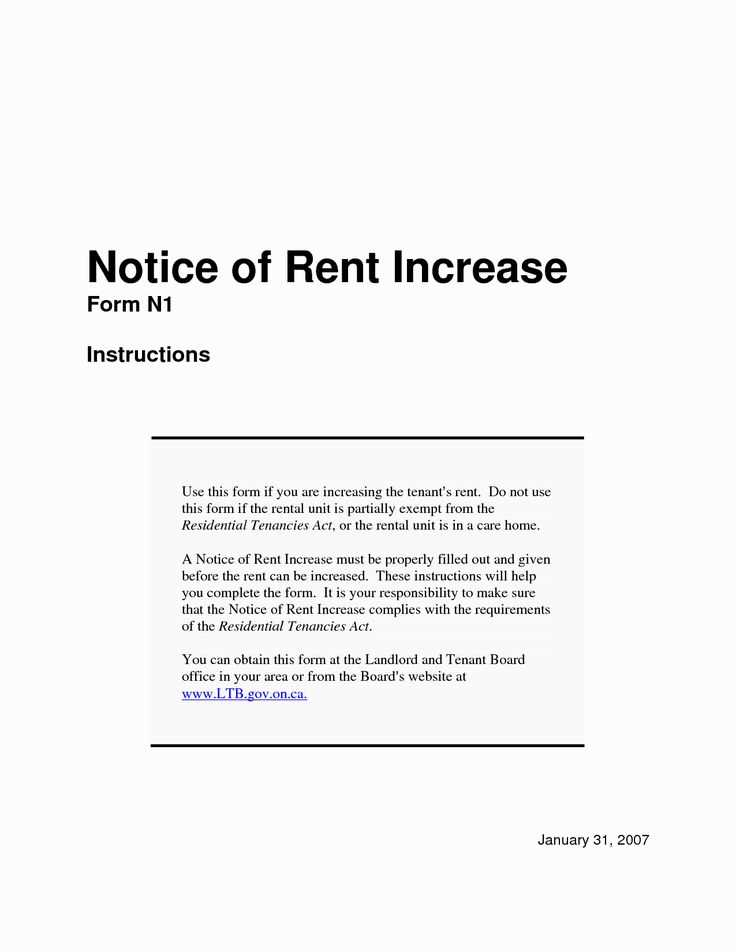
Choosing the right time to send a formal notice about changes to the terms of a tenancy is critical to ensuring that tenants have enough time to adjust. Proper timing can help avoid unnecessary conflict and ensure compliance with local laws. There are several factors to consider when determining the best moment to deliver such a notification.
- Legal Requirements: Most regions have specific laws regarding the amount of notice required before changes take effect. It is essential to know and follow these regulations to avoid legal complications.
- Tenant’s Lease Cycle: Delivering the notice too close to the end of a lease can create confusion. Providing notice well before the lease renewal period ensures clarity and sufficient time for the tenant to consider the new terms.
- Reasonable Preparation Time: Tenants need time to adjust their budget or plan for any changes in living arrangements. Giving them ample notice shows respect for their situation and ensures they have time to react.
By carefully considering these factors, you can ensure that the notification is sent at an appropriate time, creating a transparent and smooth process for both parties involved.
Common Mistakes to Avoid
When communicating changes to the terms of an agreement, landlords must ensure that their message is clear and professional. While the process may seem straightforward, several common mistakes can create confusion or legal issues. Avoiding these errors is essential for maintaining a positive relationship with tenants and ensuring compliance with relevant laws.
Failure to Provide Adequate Notice
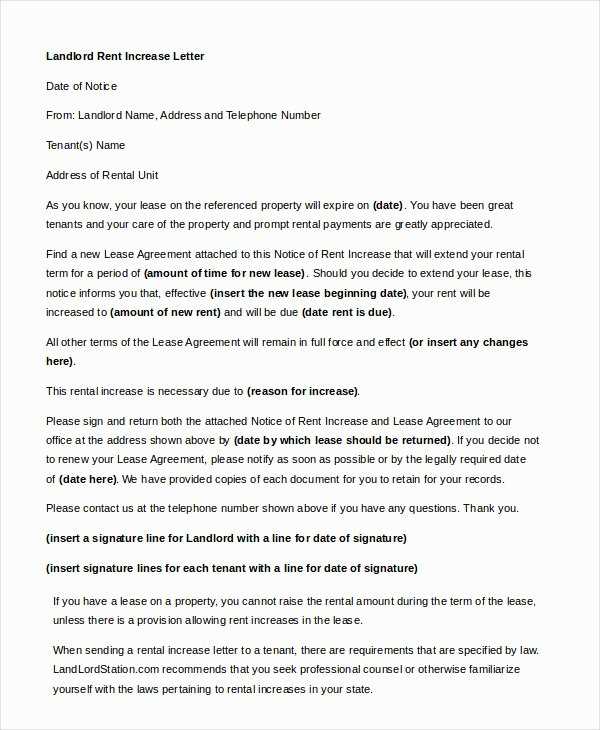
One of the most frequent mistakes is failing to provide enough notice before the changes take effect. Many jurisdictions have specific time frames in which landlords must inform tenants, and not adhering to these regulations can result in legal complications. Always ensure that your communication is sent with enough time for tenants to adjust.
Using Ambiguous or Confusing Language
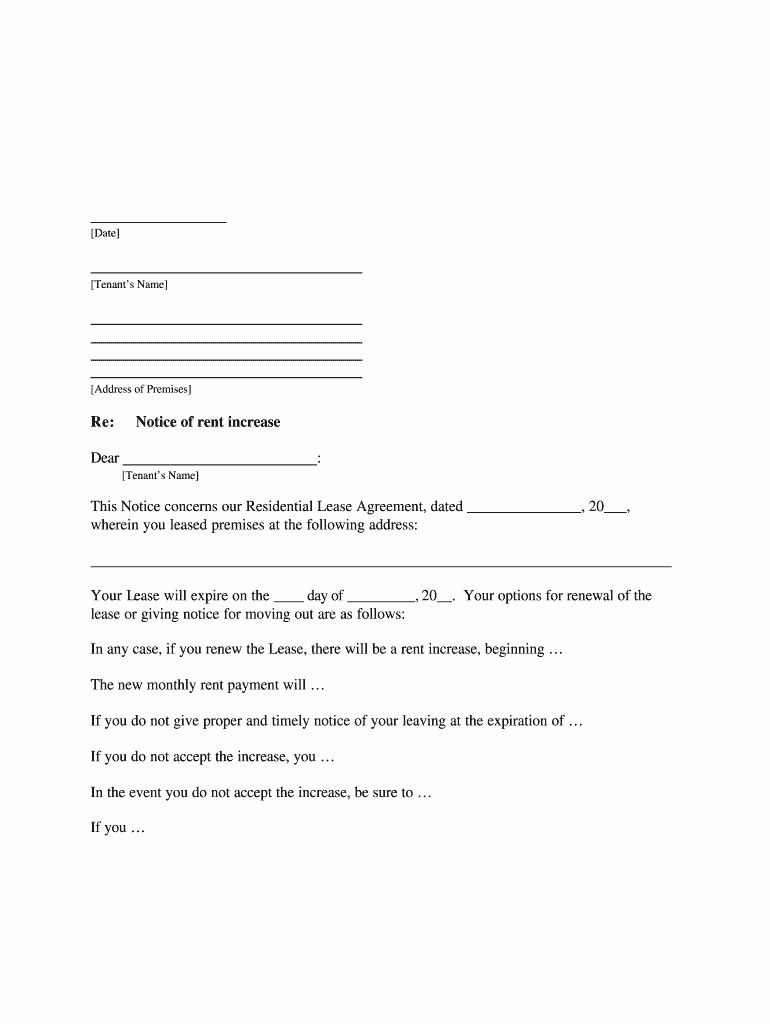
Avoid using vague or unclear language in your communication. Ambiguities about the change can lead to misunderstandings and potentially damage the relationship between the landlord and the tenant. Be precise and straightforward when explaining the changes to avoid confusion.
Tip: Always double-check the document to ensure that all information is accurate and clearly stated.
Not Offering a Clear Explanation
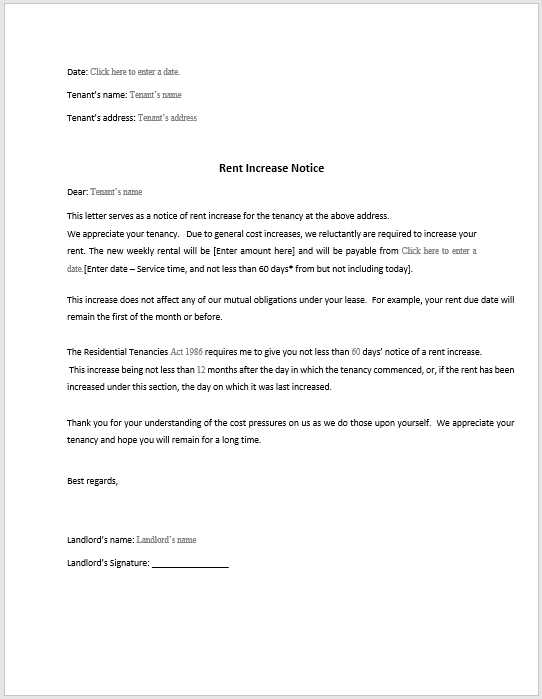
While the notice should be brief, it should also provide sufficient reasoning behind the change. Tenants are more likely to accept the new terms if they understand the rationale behind the adjustments. Failure to explain the reason for the change can lead to frustration and dissatisfaction.
Ensuring a Clear and Professional Tone
Maintaining a respectful and professional tone in any formal communication is crucial, especially when notifying tenants about changes to their agreement. A clear and polite approach helps prevent misunderstandings and fosters a positive landlord-tenant relationship. By striking the right tone, you can convey necessary information without causing unnecessary tension or conflict.
- Be Direct and Concise: Avoid overly complicated language or unnecessary details. Focus on the key points, ensuring the message is clear and to the point.
- Use Polite Language: Even if the news involves an adjustment that may not be well received, always use polite and neutral language. A respectful tone will be appreciated by tenants.
- Avoid Emotional Language: Keep emotions out of the message. Stick to the facts and avoid using language that could be seen as confrontational or dismissive.
- Show Understanding: Acknowledge the potential impact of the change. Offering an empathetic approach can go a long way in maintaining goodwill.
By following these guidelines, you ensure that your communication is both professional and considerate, helping to maintain a smooth and respectful interaction with tenants.